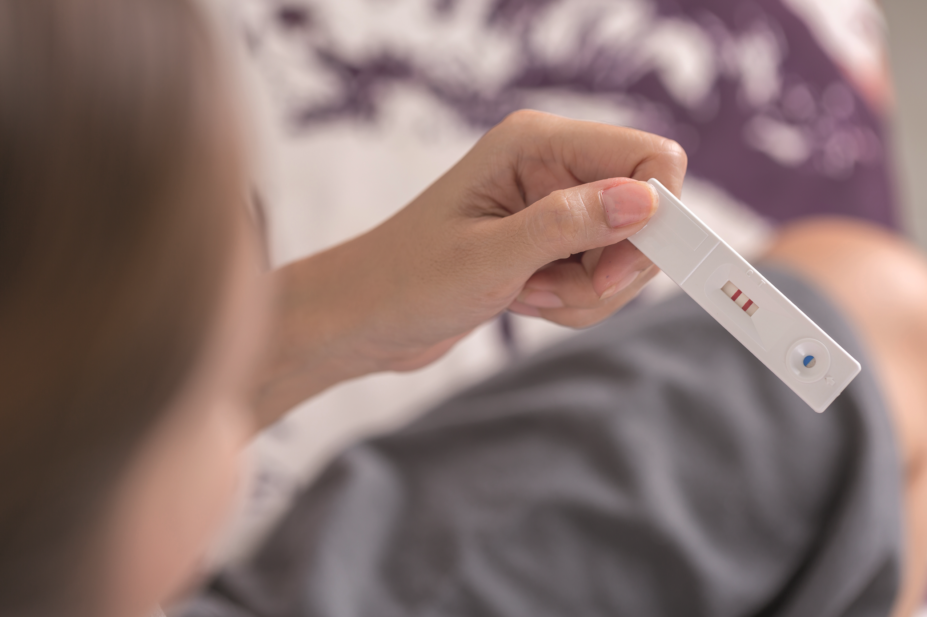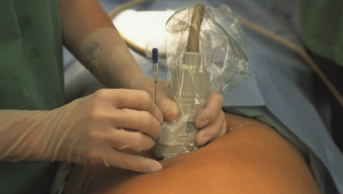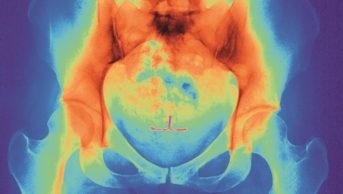
Shutterstock.com
Healthy pregnancy is closely related to a woman’s health before conception. As a result, preconception care constitutes the most important part of prenatal care, with the central principle being risk assessment.
Preconception care can be defined as the provision of biomedical, behavioural and social health interventions to women and couples before conception[1]
. It aims to improve maternal, paternal and child health, in both the short and long term[2]
. Appropriate and comprehensive preconception care can be achieved by providing lifestyle advice to optimise the health of the mother; providing advice to optimise chronic maternal health problems; identifying couples who are at risk of having a baby with a genetic or chromosomal malformation; and empowering the couple by providing them with sufficient knowledge to make informed decisions.
In this article — the first of two on preconception care — dietary and lifestyle advice will be discussed. A second article will cover genetic and pre-existing conditions.
Why do we need preconception care?
One of the biggest challenges in preconception care is that many pregnancies are unplanned; Singh et al. reported that four in ten women described their pregnancies as unplanned[3]
. As a result, essential health interventions provided once a woman and her partner decide to have a child will be too late in 40% of pregnancies[3]
. Estimates of engagement by women with a pharmacist or healthcare professional for preconception advice and care range between 18.1% and 45%[4]
.
Therefore, no opportunity should be missed at the primary care level to provide preconception advice to couples of reproductive age, regardless of their intent to become pregnant[5]
. Women starting their pregnancy with suboptimal health are not only at increased risk of maternal and neonatal morbidity, but also increase the burden on the health services[6]
. Denison et al. demonstrated that a 2.5% point decrease in obese women and 5% point increase in normal weight women in UK will result in an estimated cost saving of £12,702,278 annually for inpatient admissions[6]
. Preconception care can be raised by pharmacists and healthcare professionals when individuals present for new registration checks, well-woman consultations, contraceptive advice and reviews, as well as medicine use reviews.
Dietary advice
Calorie intake
A healthy and balanced diet is an important part of a healthy lifestyle, especially when planning a pregnancy. Within a healthy balanced diet, a women needs around 2,000kcal to maintain her weight. Being obese (body mass index [BMI] >30) increases the risk of hypertension in pregnancy and gestational diabetes by almost 11 times, as well as other pregnancy complications, such as miscarriage, shoulder dystocia, blood clots and still birth[6]
. In addition, being underweight (BMI <19) doubles the risk of having a growth-restricted baby[6]
. Even if an individual fails to achieve normal BMI between 19 and 25, obese women who manage to lose at least 5–10% of their weight in the pre-pregnancy period can achieve significant short and long-term personal health benefits for themselves, as well for their babies.
Folic acid
It is accepted that folic acid is important in pregnancy because it can help to prevent birth defects, mainly neural tube defects, such as spina bifida[7]
. The Department of Health (DoH), a ministerial department that is responsible for UK government policy on health and social care, recommends that women should take 400µg of folic acid daily, for at least three months pre-conception. Once pregnant, the DoH advises that women should continue to take folic acid at least until the 12th week of pregnancy[8]
.
Folate is available in abundance in dietary sources, such as brown rice, green leafy vegetables, cereals, nuts and beans. However, calculating dietary intake is difficult and, therefore, the easiest way of getting the right amount is by supplementation. Certain countries (e.g. the United States) have implemented fortification programmes to ensure folate intake by the general population. The programme adds 140µg of folic acid per 100g of enriched cereal grain product and has been estimated to provide 100–200µg of folic acid per day to women of child-bearing age[9]
.
Women who are at high risk of having a child with neural tube defects (e.g. through family history, diabetes, epilepsy and malabsorption) should be advised to take 5mg of folic acid until the 12th week of pregnancy[10]
.
Vitamin D
The importance of vitamin D for calcium absorption, and maintenance of healthy bones and teeth is widely known. Insufficient vitamin D during pregnancy results in calcium deficiency, which can lead to maternal osteomalacia (softening of bones), pre-eclampsia, low birth weight, and increased risk of neonatal tetanic seizures and childhood rickets[11]
,[12]
,[13]
. Most people can make enough vitamin D by being out in the sun. However, in the UK there is limited sunlight of the appropriate wavelength, particularly during winter. A recent survey in Britain showed that around a quarter of British women aged 19–24 and a sixth of those aged 25–34 are at risk of vitamin D deficiency[14]
.
Moreover, pre-pregnancy obesity has been associated with lower levels of vitamin D in both pregnant women and neonates; 61% of women who were obese (BMI ≥30) prior to pregnancy were found to be vitamin D deficient, compared with 36% of women with a pre-pregnancy BMI <25[15]
. According to the Royal College of Obstetricians and Gynaecologists (RCOG), 400IU should be prophylactically offered to all women pre- and during pregnancy, 1,000 IU to obese women (BMI >30) and 20,000 IU weekly for four to six weeks for women who are vitamin D deficient[16]
.
Iron and vitamin B12
The most common nutritional deficiency and cause for anaemia (low haemoglobin) in pregnancy is iron[17]
. Other nutritional deficiencies include vitamin B12 and folic acid (described earlier). Low pre-pregnancy haemoglobin levels, low stores of these micronutrients and increased demands during pregnancy result in anaemia. Anaemic mothers are more prone to have premature, anaemic and growth-restricted babies[18]
. During pregnancy, iron requirements increase (owing to expanding red cell mass and increasing foetal requirements) by 0.8mg in the first trimester to more than 6mg/day in the third trimester[19]
.
Most clinicians aim to keep the haemoglobin >10.5g/dl throughout pregnancy. In the pre-pregnancy period, haemoglobin level <12g/dl is diagnostic of anaemia[20]
. Furthermore, ferritin levels should be kept within normal range (12–150ng/ml)[20]
. Folic acid requirements also increase in pregnancy owing to increased red cell mass and the expanding foeto-placental unit. Vitamin B12 decreases in pregnancy (205–1025pg/ml to 30–510pg/ml). Despite lower concentrations, there is rarely, if ever, evidence of biochemical vitamin B12 deficiency. Women planning to conceive should be screened for anaemia. Initial advice for such women should to increase the intake of food stuffs rich in iron like red meat, seafood, beans, dark green leafy vegetables, dried fruits, peas and iron fortified cereals, breads and pastas. Iron deficiency anaemia can also be treated with numerous combined preparations of iron and via different routes of administration. If a woman is vitamin B12 deficient prior to pregnancy and receiving treatment for it, this should be continued during the pregnancy.
Table 1 provides recommendations of daily amounts of nutritional supplements for women with a normal BMI and obese women.
| Table 1: Daily dietary requirements of nutrient supplements for women | ||
|---|---|---|
| Nutrient supplement | Normal BMI | Obese >30kg/m2 |
| Folic acid preconception (until 12 weeks) | 400µg | 5mg |
| Vitamin D | 400IU | 1000IU |
| Iron | 30mg | 30mg |
| Calcium | 1500–2000mg | 1500–2000mg |
Lifestyle modification
Smoking
Around 11.4% of women are noted to be smoking at the time of delivery[21]
. The use of tobacco products just before and during pregnancy increases the risk of spontaneous miscarriage, reduced birth weight, placenta praevia, placental abruption, preterm premature rupture of membranes, stillbirth, preterm delivery and congenital malformation[22]
,[23]
. The risk for most of these conditions has been found to increase with the number of cigarettes smoked, therefore, women who stop smoking during pregnancy are at a lower risk for most of these pathologies[22]
,[24]
. In addition, smoking is an important cause of infertility[25]
, therefore, all women who smoke who are planning to become pregnant should be advised by pharmacists and healthcare professionals to stop smoking. Community-based smoking cessation services are available throughout England and these should be offered to women who require this.
In men, smoking causes dose-dependent reduction in sperm concentration up to an average of 22%[26]
. It also affects sperm density, motility and morphology[26]
. Therefore, male partners who smoke should also be advised to try and quit smoking.
Once pregnant, women should be encouraged to try to stop smoking without using nicotine replacement therapy (NRT). Use of NRT in pregnancy does increase smoking cessation rates in late pregnancy by 40%; however, further research evidence on NRT efficacy and safety is needed[27]
. A woman may not be aware that she is pregnant in the early days of pregnancy and if NRT is being used, this will expose the foetus to nicotine, which is classified by the US Food and Drug Administration, the body responsible for evaluating the safety and efficacy of medicines in the United States, as a pregnancy category D drug. Cigarette smoking releases much more nicotine than NRT, in addition to toxins like carbon monoxide and lead. NRT should only be offered to women who are planning pregnancy, but have tried and failed to stop smoking, as NRT is considered to be much safer than continuing smoking[28]
.
Alcohol and illicit drugs
Alcohol use during pregnancy can cause miscarriage, preterm birth, low birth weight, still birth and foetal alcohol spectrum disorders[29]
. Children with foetal alcohol spectrum disorders can have learning difficulties, problems with behaviour, physical disability, and emotional and psychiatric problems[29]
. Whether or not a baby is affected mildly or severely, this condition is directly linked to how much and how often a woman drinks during her pregnancy[30]
. There is no guaranteed safe level of alcohol consumption at any time during pregnancy or when trying to get pregnant, and all types of alcohol should be avoided[30]
. In addition, acute alcohol consumption is associated with infertility. Potential mechanisms through which alcohol may impair fertility include an alcohol-related rise in oestrogen, which leads to decreased follicle stimulating hormone secretion and impaired ovulation[31]
. It is recommended that alcohol should be avoided in the first three months of pregnancy. Drinking small amounts of alcohol after this time does not appear to be harmful to the unborn baby, but drinking more than one or two units, once or twice per week and binge drinking (six units or more of alcohol on any one occasion for women) should be avoided[30]
.
Women and their partners who are planning pregnancy who use illicit drugs should be advised to stop. Cocaine use during pregnancy increases the risk of premature birth, lower birth weight, smaller head circumference, intracerebral haemorrhage and behavioural problems[32]
.
Marijuana is also one of the most frequently misused substances. It supresses luteinising hormone and testosterone secretion, in turn causing oligospermia. Prolonged use of cocaine leads to decreased libido, and erectile and ejaculatory dysfunction[33]
. Referral to a local drug treatment service should be considered before either individual considers pregnancy.
Exercise and obesity
Obesity rates have doubled worldwide over the last 30 years and it has now become a global epidemic[34]
. A retrospective study by Scott-Pillai et al. examining the impact of BMI on maternal and neonatal outcomes showed that compared with normal weight women (in this study with a BMI 19–25), women in the overweight (BMI 25–30) and obese (BMI >30) categories have an increased risk of hypertensive disorders, gestational diabetes, induction of labour, caesarean section, postpartum haemorrhage, preterm delivery, wound infections and unsuccessful breastfeeding, with all risks significantly increasing for obese class II and III women[35]
. Foetal complications included increased risk of miscarriage, congenital anomalies, as well as poor ultrasound visualisation of the foetus and consequent difficulties in foetal surveillance and screening for anomalies, macrosomia, still birth, the newborn requiring neonatal admission, and neonatal death[35]
.
Pharmacists and healthcare professionals should advise and help women with a BMI ≥30 to reduce their weight before becoming pregnant. Women should be counselled of the increased risk of maternal and foetal complications associated with obesity, and the possible strategies to minimise these prior to conception. Their weight, BMI and waist circumference should be regularly monitored. In addition, they should be referred to a dietician for specific dietary advice, and the importance of physical activity should be stressed. An increasing number of obese women in the reproductive age group (18-45 years) are undergoing bariatric surgery, and require management by multi-disciplinary team to optimise the pregnancy outcome[36]
,[37]
. It is recommended that they delay pregnancy for at least 12 months following surgery and should be advised regarding reliable contraception[37]
. They should continue folic acid, iron, calcium and vitamin B12 supplements, and should also have a follow-up with a dietician to monitor their nutritional status and weight gain. Women who have had bariatric surgery usually tolerate pregnancy well[37]
.
Other recommendations
Unnecessary exposure to radiation or hazardous substances in occupational, environmental or medical settings should be avoided. Women should also avoid taking any over-the-counter medicines (e.g. ibuprofen) without first consulting a pharmacist to ensure that these products are safe to take.
High doses of vitamin A (>10,000IU) has teratogenic effects. Isotretinoin is a vitamin A metabolite, which is used in treatment of acne, and has been associated with embryopathy in several reports[38]
. Women should not exceed 10,000IU of vitamin A, either before becoming pregnant or at any time during pregnancy as per the guidelines from the National Institute for Health and Care Excellence, England’s health technology assessment body[39]
.
Useful links:
- BMI calculator
- Change for life
- Improving preconception care in Lanarkshire: a situation analysis
- NHS Choices: drinking alcohol while pregnant
- NHS Choices: planning your pregnancy
- NHS Choices: stop smoking
- NHS Health Scotland. Ready steady baby!
- National Institute for Health and Care Excellence (NICE): preconception – advice and management
- National Institute for Health and Care Excellence (NICE): clinical guideline 192 – antenatal and postnatal mental health: clinical management and service guidance (2014)
- National Institute for Health and Care Excellence (NICE): public health guidance 27: weight management before, during and after pregnancy (2010)
Royal College of Obstetricians and Gynaecologists: smoking and pregnancy
Smoking cessation help and advice
The Family Planning Association
Reading this article counts towards your CPD
You can use the following forms to record your learning and action points from this article from Pharmaceutical Journal Publications.
Your CPD module results are stored against your account here at The Pharmaceutical Journal. You must be registered and logged into the site to do this. To review your module results, go to the ‘My Account’ tab and then ‘My CPD’.
Any training, learning or development activities that you undertake for CPD can also be recorded as evidence as part of your RPS Faculty practice-based portfolio when preparing for Faculty membership. To start your RPS Faculty journey today, access the portfolio and tools at www.rpharms.com/Faculty
If your learning was planned in advance, please click:
If your learning was spontaneous, please click:
How to have effective consultations on contraception in pharmacy
What benefits do long-acting reversible contraceptives offer compared with other available methods?
Community pharmacists can use this summary of the available devices to address misconceptions & provide effective counselling.
Content supported by Bayer
References
[1] World Health Organization Meeting, Geneva, 6-7 February 2012. Preconception care to reduce maternal and childhood mortality and morbidity. Preconception care presentation slides. Available at: http://www.who.int/maternal_child_adolescent/documents/concensus_preconception_care/en/ (accessed January 2017)
[2] World Health Organization. Meeting to develop a global consensus on preconception care to reduce maternal and childhood mortality and morbidity. Available at: http://apps.who.int/iris/bitstream/10665/78067/1/9789241505000_eng.pdf (accessed January 2017)
[3] Singh S, Sedgh G & Hussain R. Unintended pregnancy: worldwide levels, trends, and outcomes. Studies in Family Planning 2010;41(4):241–250. PMID: 21465725
[4] Steel A, Lucke J & Adams J. The prevalence and nature of the use of preconception services by women with chronic health conditions: an integrative review. BMC Women’s Health 2015;15:14. doi: 10.1186/s12905-015-0165-6
[5] Coffey K & Shorten A. The challenge of preconception counselling: using reproductive life planning in primary care. J Am Assoc Nurse Pract. 2014;26(5):255–262. doi: 10.1002/2327-6924.12054
[6] Denison FC, Norwood P, Bhattacharya S et al. Association between maternal body mass index during pregnancy, short-term morbidity, and increased health service costs: a population-based study. BJOG 2014;121:72–82. doi: 10.1111/1471-0528.12443
[7] Maria De-Regil LM, Fernández-Gaxiola AC, Dowswell T et al. Effects and safety of periconceptional folate supplementation for preventing birth defects. Cochrane Database Syst Rev. 2010 (10):CD007950. doi: 10.1002/14651858.CD007950.pub2
[8] Lumley J, Watson L, Watson M et al. Periconceptional supplementation with folate and/or multivitamins for preventing neural tube defects. Cochrane Database Syst Rev. 2000;( 2):CD001056. doi: 10.1002/14651858.CD001056
[9] Quinlivan EP & Gregory JF 3rd. Reassessing folic acid consumption patterns in the United States (1999–2004): potential effect on neural tube defects and overexposure to folate. Am J Clin Nutr. 2007;86(6):1773–1779. PMID: 18065598
[10] Department of Health, Scottish Office Home and Health Department, Welsh Office, Department of Health and Social Services Northern Ireland. Folic acid and the prevention of neural tube defects. report from an expert advisory group. London: Department of Health; 1992. p. 1–33.
[11] Wei S-Q, Qi H-P, Luo Z-C et al. Maternal vitamin D status and adverse pregnancy outcomes: a systematic review and meta-analysis. The Journal Of Maternal-Foetal & Neonatal Medicine 2013;26(9):889–899. doi: 10.3109/14767058.2013.765849
[12] Thorne-Lyman A & Fawzi WW. Vitamin D during pregnancy and maternal, neonatal and infant health outcomes: a systematic review and meta-analysis. Paediatr Perinat Epidemiol 2012;26 Suppl 1:75–90. doi: 10.1111/j.1365–3016.2012.01283.x
[13] Bowyer L, Catling-Paull C, Diamond T et al. Vitamin D, PTH and calcium levels in pregnant women and their neonates. Clinical Endocrinology 2009;70: 372–377. doi: 10.1111/j.1365-2265.2008.03316.x
[14] Office for National Statistics. The national diet and nutrition survey: adults aged 19 to 64 years: nutritional status (anthropometry and blood analytes), blood pressure and physical activity London: The Stationery Office, 2004.
[15] Bodnar LM, Catov JM, Roberts JM, Simhan HN. Prepregnancy obesity predicts poor vitamin D status in mothers and their neonates. J Nutr. 2007;137:2437–2442. PMID: PMC2556251
[16] Vitamin D in pregnancy: Royal College of Obstetricians and Gynaecologists, UK. Scientific Impact Paper No. 43 June 2014. Available at: https://www.rcog.org.uk/globalassets/documents/guidelines/scientific-impact-papers/vitamin_d_sip43_june14.pdf (accessed January 2017)
[17] Stoltzfus R & Dreyfuss M. Guidelines for the use of iron supplements to prevent and treat iron deficiency anaemia. ILSI Press, 1998. Available at: http://www.who.int/nutrition/publications/micronutrients/guidelines_for_Iron_supplementation.pdf (accessed January 2017)
[18] Allen LH. Anaemia and iron deficiency: effects on pregnancy outcome. Am J Clin Nutr. 2000;71(5 Suppl):1280S–1284S. PMID: 10799402
[19] Bothwell TH. Iron requirements in pregnancy and strategies to meet them. Am J Clin Nutr. 2000;72(1 Suppl):257S–264S. PMID: 10871591
[20] WHO, UNICEF, UNU. Iron deficiency anaemia: assessment, prevention and control, a guide for programme managers. Geneva, World Health Organization, 2001. Available at: http://www.who.int/nutrition/publications/micronutrients/anaemia_iron_deficiency/WHO_NHD_01.3/en/ (accessed January 2017)
[21] Statistics on Women’s Smoking Status at Time of Delivery (SATOD), 2014/15 Published 27 May 2016. Available at: http://content.digital.nhs.uk/catalogue/PUB20781/stat-smok-eng-2016-rep.pdf (accessed January 2017)
[22] Dobson F, Donald D, Mowlam M et al. Smoking kills: a white paper on tobacco. Department of Health, England, 1998. Available at: https://www.gov.uk/government/uploads/system/uploads/attachment_data/file/260754/4177.pdf (accessed January 2017)
[23] Andres RL & Day MC. Perinatal complications associated with maternal tobacco use. Semin Neonatal. 2000;5(3):231–241. doi: 10.1053/siny.2000.0025
[24] PolaÅ„ska K & Hanke W. Effect of smoking during pregnancy on maternal condition and birth outcome–overview of epidemiologic studies. Przegl Epidemiol. 2004;58(4):683–691. PMID: 15810511
[25] Shiverick KT. Chapter 24 – Cigarette smoking and reproductive and developmental toxicity. In: Gupta RC, editor. Reproductive and Developmental Toxicology Burlington, MA: Elsevier; 2011. ISBN: 978-0-12-382032-7
[26] Smoking and infertility: a committee opinion. The Practice Committee of the American Society for Reproductive Medicine American Society for Reproductive Medicine, Birmingham, Alabama. Available at: https://www.asrm.org/uploadedFiles/ASRM_Content/News_and_Publications/Practice_Guidelines/Educational_Bulletins/Smoking_and_infertility(1).pdf (accessed January 2017)
[27] Coleman T, Chamberlain C, Davey MA et al. Pharmacological interventions for promoting smoking cessation during pregnancy. Cochrane Database Syst Rev 2015;12:CD010078. doi: 10.1002/14651858.CD010078.pub2
[28] Dempsey DA & Benowitz NL. Risks and benefits of nicotine to aid smoking cessation in pregnancy. Drug Safety 2008;24(4):277–322. PMID: 11330657
[29] UK Chief Medical Officers: Alcohol consumption in pregnancy Guidelines Review January 2016. Available at: https://www.gov.uk/government/uploads/system/uploads/attachment_data/file/489795/summary.pdf (accessed January 2017)
[30] Royal College of Obstetricians and Gynaecologists. Alcohol and pregnancy: Information for you. Feb 2015. Available at: https://www.rcog.org.uk/globalassets/documents/patients/patient-information-leaflets/pregnancy/pi-alcohol-and-pregnancy.pdf (accessed January 2017)
[31] Gill J. The effects of moderate alcohol consumption on female hormone levels and reproductive function. Alcohol and Alcoholism 2000;35(5):417–423. doi: 10.1093/alcalc/35.5.417
[32] Shankaran S, Lester BM, Das A et al. Impact of maternal substance use during pregnancy on childhood outcome. Semin Fetal Neonatal Med. 2007;12(2):143–150. doi: 10.1016/j.siny.2007.01.002
[33] Kulkarni M, Hayden C & Kayes O. Recreational drugs and male fertility. Trends in Urology & Men’s Health 2014;5(5):19–23. doi: 10.1002/tre.414
[34] World Health Organisation; Fact sheet 311. Obesity and overweight: 10 May 2011. Available at: http://www.who.int/mediacentre/factsheets/fs311/en/ (accessed January 2017)
[35] Scott-Pillai R, Spence D, Cardwell CR et al. The impact of body mass index on maternal and neonatal outcomes: a retrospective study in a UK obstetric population, 2004–2011. BJOG 2013;120:932–939. doi: 10.1111/1471-0528.12193
[36] American Society for Metabolic & Bariatric Surgery. Bariatric Surgical Society Takes on New Name, New Mission and New Surgery. Gainesville, FL: American Society for Metabolic & Bariatric Surgery;2007. Available at: http://filecache.drivetheweb.com/mr5mr_asmbs/177372/download/press_release_8202007.pdf
[37] Khan R, Bashir D & Chappatte O. Pregnancy outcome following bariatric surgery. The Obstetrician & Gynaecologist 2013;15:37–43. doi: 10.1111/j.1744-4667.2012.00142.x
[38] Duckworth S, Mistry HD & Chappell LC. Vitamin supplementation in pregnancy. The Obstetrician & Gynaecologist 2012;14(3):175–178. doi: 10.1111/j.1744-4667.2012.00116.x
[39] National Institute for Health and Care Excellence (NICE). Preconception – advice and management. Scenario: Advice on vitamin A and OTC or herbal medicines. Available at: https://cks.nice.org.uk/pre-conception-advice-and-management#!scenariorecommendation:7 (accessed January 2017)


